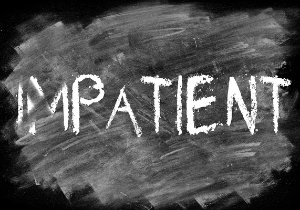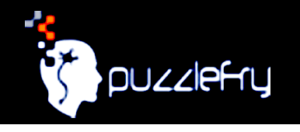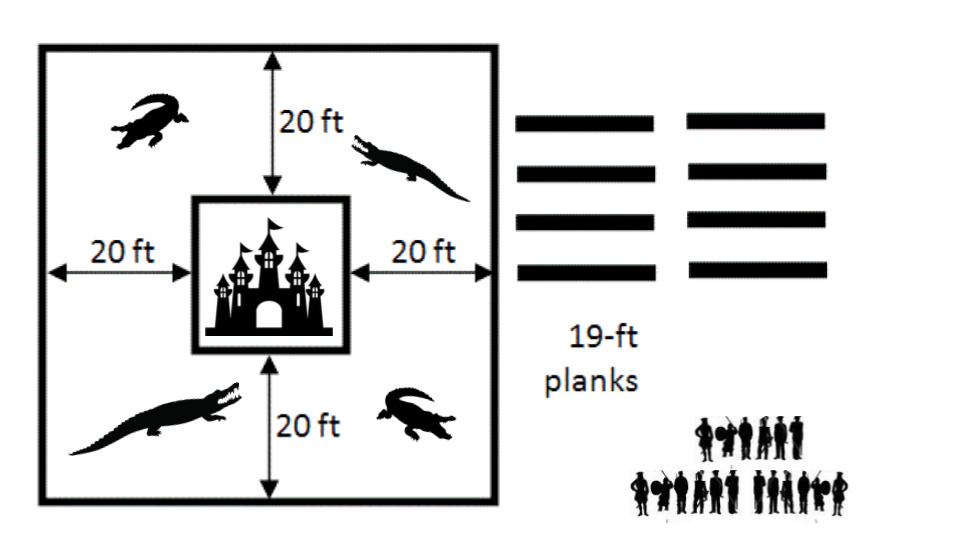How to Get Students to Take the Stairs – Not the Elevator
A MiddleWeb Blog
 Porcupines and Castles: Help Your Kids Slow Down and Think
Porcupines and Castles: Help Your Kids Slow Down and Think
It’s hard to love a porcupine. I know this because in 6th grade I had a teacher who reminded me of one.
Whenever we crossed paths in the hall or in class, she grew agitated, tense, and seemed to ‘bristle.’ I’m pretty sure that her reaction was due to my “total disregard for manners and politeness.” …Her words – not mine.

Though it was decades ago, I can still vividly remember the day that she introduced the ‘castle problem.’ It went like this…
An army is trying to take over a castle that is surrounded by a moat. The moat is square in shape and is 20 feet across. It is also full of crocodiles and other dangerous beasts that will attack if the water is disturbed. The only equipment brought by the army (other than their swords and shields) is several planks of wood that are 19 feet long. How can the attacking army best get across the moat to take over the castle?
My brain lit up. Castles…attacking armies…moats with crocodiles!?! This was my kind of problem. Immediately my classmates and I went to work planning, sketching, and scribbling. After a few minutes, Mrs. Porcupine stopped the class, asked us to pair up, and to discuss two things. First we were to share our ‘plan’ for getting the army across the moat. Second, we were to explain any potential problems with our plan.
Our teacher then asked us to stop our planning…and to start again. ‘This time…” she said. “…We are going to practice thinking more slowly.” She then proceeded to walk us through each aspect of the problem.
Over the next 10 minutes, our teacher modeled several helpful steps for us. She started by asking us to describe the ‘goal’ of the castle problem. Immediately my friend Jeremy called out, “To get across the mote and kill the other army!”
Mrs. Porcupine thanked Jeremy, then paused and asked for additional details about the ‘goal’ of the problem. Other students started to chime in. They mentioned the moat, the monsters in the water, and the limited supplies. The class finally decided on the following:
GOAL
To get across the moat with as many live soldiers as possible using only the stuff we have.
The teacher then asked us to identify any barriers or constraints that might affect how we went about solving the problem. The class talked about the width of the moat, the length of the wooden planks, the crocodiles, not being able to disturb the water, and the potential difficulty of trying to build something using no nails.
‘Good,” Mrs. Porcupine declared. “Now…over the next 8-10 minutes, I want you to try to come up with not just one, but two potential solutions to the castle problem. Be prepared to share your ideas and explain what potential drawbacks might exist with what you have come up with.”
We got back to work, and when 10 minutes was over, began discussing several of our classmates’ ideas. Then, in groups, we worked to identify which solutions were the most likely to work.
Getting Students to Take the Stairs Instead of the Elevator
Now, decades later, I look back at the castle problem and see the benefits of slowing students down so that they engage in each step of the problem-solving process. After all, real-world problems are rarely – if ever – solved quickly. They require a variety of skills including interpreting information, planning and methodical implementation, checking results, and trying alternative strategies (Muir, Beswick, & Williamson, 2008).

This common tendency of wanting to take the elevator also pops up in current educational research. Studies suggest that when students are presented with authentic challenges that require them to explore multiple solutions, rarely is enough time spent framing or examining the problem to be solved (Svihla & Reeve, 2016).
As a result, I now spend quite a bit of time designing/developing open-ended problems that have good, better, and best solutions. I also work with students in the early stages of problem solving to explore and interpret information and to brainstorm different problem-solving approaches.
We work individually, in pairs, and in groups to look for multiple solutions and then spend time evaluating the accuracy and/or effectiveness of what we have come up with. Over time, students grow less concerned about finding a quick, correct answer – and more comfortable and confident with the slow, cognitive wrestle that problem-solving requires.
Problem-Solving Tools and Tips for Your Classroom
A variety of resources and tools exist to help facilitate better problem-solving in the classroom. Several sites such as Braingle, and SharpBrains put together brain-teasers and logic problems for students to solve. And you’ll find many more on Pinterest.
One of my favorite sites is PuzzleFry. 
One my class’s recent favorites was one titled “Who killed the gardener?” Students have the option of submitting their own answers and/or viewing answers submitted by other students as well.
Although the site is useful, since many of these puzzles and brain-teasers have a single correct answer, I try to revamp the problems to be more open-ended. Doing so seems to encourage students to develop and rework multiple solutions to a problem; it also allows our class to examine and evaluate other students’ solutions on a continuum of ‘likelihood of success’ ….rather than just as right or wrong.
Other teachers are also finding it useful to design their own problems for their students to solve. In Dan Meyer’s Ted Talk, he offers suggestions on how take problems found in existing curricular materials and transform them into real-world challenges.
Meyer has also developed a number of real-world challenges for other teachers to use in their classroom to help their students thinking strategically and critically.
Helping Students to See the Steps
Despite decades of experience in walking, jumping, running, and playing sports, I still occasionally trip when going up and down the stairs. It happens for a variety of reasons. Either I am trying to go too fast, I miscount the number of stairs, or sometimes I’m just not paying attention. While it is fairly common for many of us to do this, it is still pretty embarrassing.

I mean, we use terms like creation, evaluation, synthesis, strategizing, evaluation…etc. to describe what we are doing in class. But…that doesn’t ensure that students know and employ the steps required for deep, extended thinking.
That’s why I find it helpful to work with students to identify the steps that are unique to each kind of task. Doing so keeps students from rushing the problem-solving process and helps ensure that that they engage in cognitive step necessary to the task.
The Need for More Problems and Problem Solving in Schools
Not all of what we do in the classroom can – or even should – involve castles, moats, and alligators. But there seems to be room for much improvement in how we go about challenging our students to think slowly, methodically, and deeply about real-world problems.
We might not feel as confident as Mrs. Porcupine or Mr. Meyer about facilitating fantastic problem-solving. But I would wager that each one of us wants to develop students who are able to think deeply about real-world challenges. After all, in a decade or two, it will be them running this world…not us. The least we can do is seek to provide students with better problems to solve and the support and scaffolding needed to do so.
References
Muir, T., Beswick, K., & Williamson, J. (2008). “I’m not very good at solving problems”: An exploration of students’ problem solving behaviours. The Journal of Mathematical Behavior, 27(3), 228-241.
Svihla, V. v., & Reeve, R. r. (2016). Facilitating Problem Framing in Project-Based Learning. Interdisciplinary Journal Of Problem-Based Learning, 10(2), 113-130.





































I believe this is the key to tapping into learning and engagement for some of my students. I have applied these principles to my business, but not my class. Can you recommend a resource to pull more problem solving activities similar to the castle example above
the process being described is well documented in the Military Operational Planning Process. Identify the mission (who, what, where, when, why, and one measure of success); identify constraints, restraints, environment, “resources”; develop an options analysis with criteria for success; then a decision; then the steps to reach that goal. In short, its what some call the OODA loop (Observe, Orient, Decide, Act). In my opinion, its this loop that is involved in all human thinking and even can be related to the “creative” process. anyway, interesting to note the connections.
I absolutely love this post, Curtis! It’s definitely a “keeper” for my files. This is how all teachers should learn to think and teach. You’ve explained the value and process of problem-solving clearly. Thanks (from another STOY)